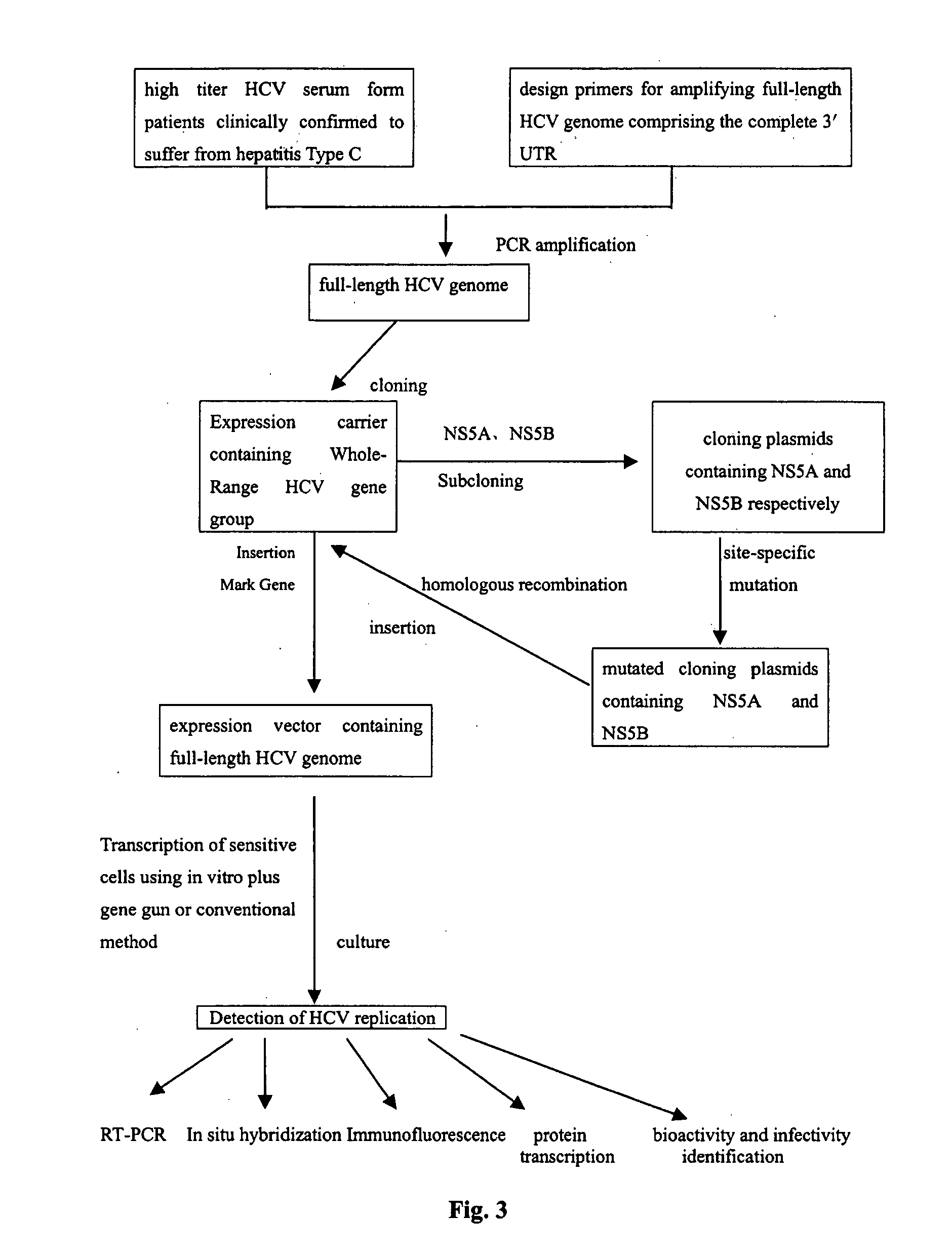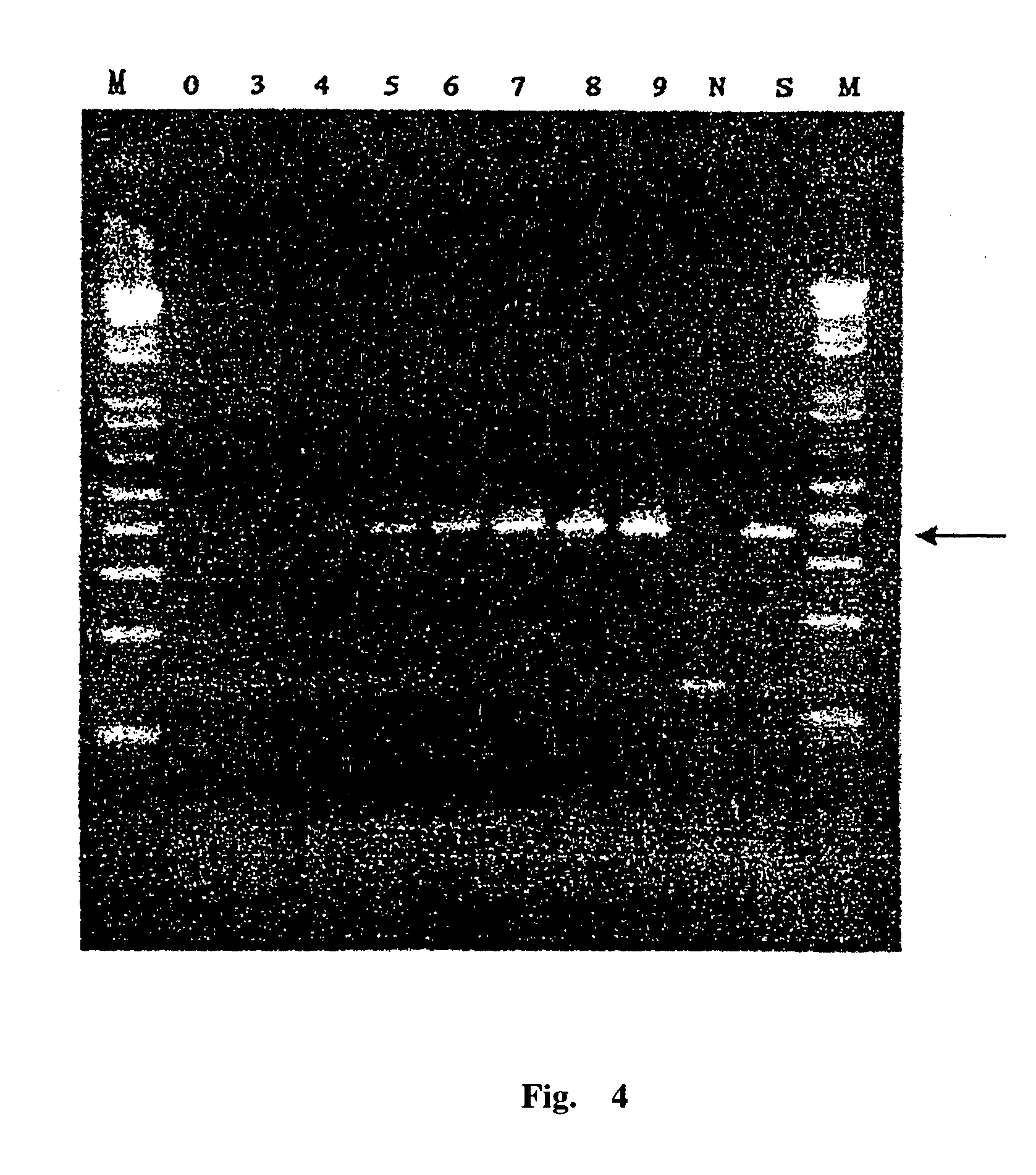Intact hepatitis c virus and the method for culturing it in a vitro cell culture
a cell culture method and hepatitis c virus technology, applied in the field of intact hepatitis c virus and the method of culturing it in vitro cell culture, can solve the problems of liver fibrosis, hepatocirrhosis, and the inability to successfully culture whole hcv virus
- Summary
- Abstract
- Description
- Claims
- Application Information
AI Technical Summary
Benefits of technology
Problems solved by technology
Method used
Image
Examples
Embodiment Construction
[0034] The scheme of this embodiment has been shown in FIG. 3, and has been generally described as above.
[0035] Specifically, the process for amplifying the full-length HCV genome is, first, to design 8 PCT amplification primers based on the enzyme site (restriction site) on HCV conserved sequences, vector and specific segment of HCV genome. The full-length 9.6 kb genome is gradually amplified by overlapping RT-PCR method. All the eight synthesized primers are provided with an enzyme-digested site for cloning and their positions ensure obtaining each segment of HCV genome so as to link them together to form the complete full-length HCV genome in terms of sequences, particularly with the nucleotide sequence at the 3' end of the genome.
1 The 8 primer sequences are as follows: Primer 1 GCCGAATTCGCCAGCCCCCTGATGGGGGC (SEQ ID NO: 1) EcoR I Primer 2: CTCAGCCCGGGTACCCGGGCTG (SEQ ID NO: 2) Kpn I Primer 3: CTCAGCCCGGGTACCCTTGGCCCCTC (SEQ ID NO: 3) Kpn I Primer 4: CAAAAGAGTCTAGAATTACTATCTTG (S...
PUM
| Property | Measurement | Unit |
|---|---|---|
| length | aaaaa | aaaaa |
| genomic structure | aaaaa | aaaaa |
| concentration | aaaaa | aaaaa |
Abstract
Description
Claims
Application Information
 Login to View More
Login to View More - R&D
- Intellectual Property
- Life Sciences
- Materials
- Tech Scout
- Unparalleled Data Quality
- Higher Quality Content
- 60% Fewer Hallucinations
Browse by: Latest US Patents, China's latest patents, Technical Efficacy Thesaurus, Application Domain, Technology Topic, Popular Technical Reports.
© 2025 PatSnap. All rights reserved.Legal|Privacy policy|Modern Slavery Act Transparency Statement|Sitemap|About US| Contact US: help@patsnap.com



